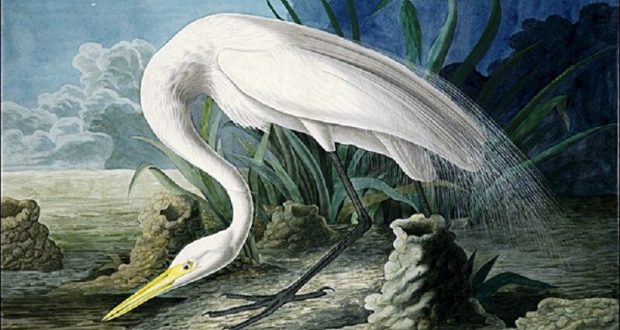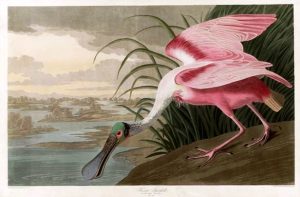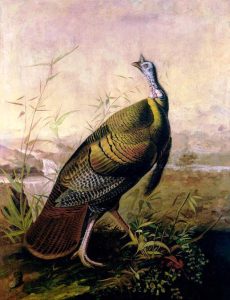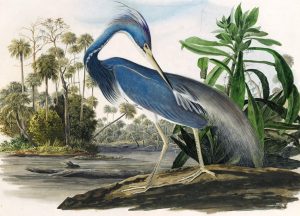In general, an illustrator is a type of narrative artist whose job it is to enhance a subject, which is written or spoken, by providing supportive visual representation. Illustrations are used for a wide variety of reasons which include books, newspaper and magazine stories, advertising, directions and for a multitude of scientific uses. In addition to all of those differences, there is also a wide diversity of techniques and artistic media that can be employed while doing an illustration. For example, there are pencil or ink drawings, watercolor or oil paintings, wood-cut engravings, and a relatively recent addition to the list, airbrushing.
Jean-Jacques (or John James) Audubon (1785-1851) was already a painter by the time he arrived in America from France as a young man. Once here, he began to cultivate many other interests, the most important of which was the study of nature, and birds in particular, or ornithology. As he studied the many branches of zoology, it became apparent to him that there was not a complete record to work from. While the science of ornithology already had some history, Audubon was committed to finding and painting all of the bird species in North America for publication. The poet and naturalist Alexander Wilson (1766-1813), who Audubon met when he was a young man, had previously produced a book of bird illustrations. Although incomplete, Wilson’s work was of great inspiration to Audubon.
In October 1820, Audubon began his search for specimens in the southern United States and eventually made it all the way down into Florida. At that time he called his future work “Birds of America,” and made it a personal goal to paint one specimen a day. What is now astonishing about his illustrative approach is the fact that he drew all of the specimens in their natural environment which was also beautifully rendered. Among other teachers, Audubon had taken lessons from the now famous landscape painter Thomas Cole (1801-1848), who is regarded as the founder of the Hudson River School.
In 1824, Audubon went to Philadelphia to seek a publisher for his bird drawings. Sadly, he was repeatedly turned down for publication because his work was somehow threatening to the individuals at the Academy of Natural Sciences. Undeterred, he eventually took the advice of a friend and in 1826, at age 41, brought his collection of works (over 300 drawings at the time), to England. As it turned out, after his fourteen years of field observations, it was the British who saw the importance of the work. He was finally able to publish his wonderful book, “The Birds of North America.” This monumental accomplishment consisted of 435 life-size, hand-colored illustrations of some 700 different bird species. The book was made with the use of engraved copper plates that printed on sheets measuring 26 by 39 inches — quite large. One of the most famous of his illustrations is the wild turkey, which had been Benjamin Franklin’s pick for our national bird. It somehow lost by a landslide to the bald eagle!
“The Birds of North America” is considered to be one of the finest ornithological works ever compiled. In it, Audubon identified twenty-five new species and many sub-species. Toward the end of his life, he endeavored to go one step further and depict all known species of North American mammals. These were published in three sets between 1845 and 1848. These detailed images measured a much smaller 22 by 28 inches.
Here is a link to a video explaining one of John Audubon’s original books:
By Sal Maccarone







